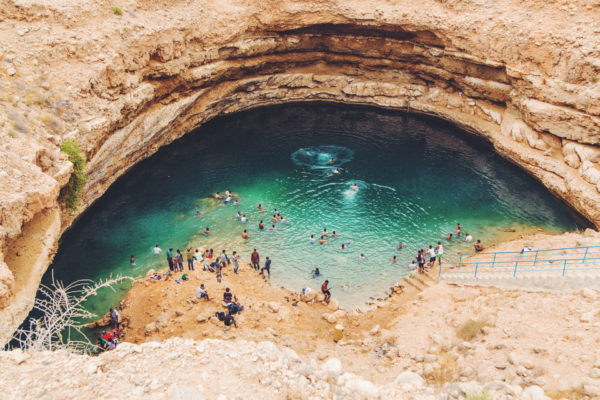Does Carbon Offsetting Actually Work?
By
2 years ago
Green Peace isn't so convinced...

As the world mobilises to achieve net zero, carbon offsetting schemes are simultaneously gathering steam, pledging a plethora of trees to the cause, often with one (or more) planted with every purchase. But, with reports suggesting that there isn’t enough land left on earth to host all the trees needed to fulfil these pledges, the future is looking even less green than we once thought. So, does carbon offsetting work? Or is the practice just one big grey area? Rebecca Cox investigates…
Read the C&TH Responsible Tourism Guide
What Is Carbon Offsetting?
In simple terms, carbon offsetting is a way of paying for others to reduce their emissions or absorb CO2 (most commonly through planting trees) to compensate for your own carbon emissions. As well as tree planting schemes, offsetting schemes also consist of renewable energy schemes and appliances for developing communities and education programmes. James Poynter at carbon offsetting subscription service Carbon Neutral Britain told us: ‘Carbon Offsetting is the prevention or removal of greenhouse gases (more commonly referred to as ‘carbon emissions’) from the atmosphere, to compensate for emissions created elsewhere.’
How Does It Work?
Common carbon offsetting projects include tree planting and renewable energy schemes. The carbon emissions for activities or projects that you are looking to offset are calculated, and the amount of ‘offsetting’ required is determined. The offsetting projects must qualify as additional – that is, put in place specifically to match the carbon produced.
‘Carbon Offsetting works in practice via projects around the world that prevent or remove greenhouse gases, such as tree planting, deforestation prevention and protection, and renewable projects such as Wind, Solar and Hydro Power,’ James says. ‘Third party standards ensure the project is “additional”, meaning the project would not have otherwise occurred if it was not funded by the Carbon Credit purchases themselves. In addition, the standards also ensure the projects have secondary benefits (not just offsetting emissions) – providing employment, education, and a positive impact on the biodiversity and wildlife within the region.’
‘There are many different third-party standards, but the three largest and most regulated (used by CarbonNeutral Britain), are the Verified Carbon Standard (VCS), Gold Standard Voluntary Emission Reductions (VER), and the United Nations Certified Emission Reductions (CER) programmes. In particular, CER projects are regulated by the United Nations directly.’
Costa Rica: An Example Of Good Carbon Offsetting
‘Carbon offsetting [goes much further] in the case of Costa Rica,’ says Carmen Roldán Chacón, Director of Environmental Services Development and Commercialisation, the National Forestry Financing Fund, the Ministry of the Environment, and Energy and Technology of Costa Rica. ‘Carbon sinks are carbon reservoirs – spaces that absorb more carbon than they release into the atmosphere. Trees, corals, algae and soil all absorb greenhouse gases and transform them; it’s important to protect and increase sinks.
‘When a country develops, privately or by the government, projects to conserve natural ecosystems are considered very important,’ Carmen adds. ‘These ecosystems, by absorbing greenhouse gases, are mitigating the country’s carbon footprint, because they absorb the gases and release less of them into the atmosphere. Costa Rica, through investment in forest cover recovery, became a carbon sink according to the FAO in 2016, which means that its forests emit fewer greenhouse gases than the amount they absorb. In fact, our country’s greenhouse gas inventory, managed by the National Meteorological Institute, maintains positive data in the AFOLU sector (Agriculture, Forestry and other land uses, IPCC, 2006) thanks to the reversal of the deforestation process that the country has achieved.’
But just as with ecotourism, keeping it local is best: we can’t let some countries do all the hard work as others continue to pollute (even if they are offsetting those emissions). ‘The problem of offsetting arises when “carbon credits” are bought from projects that are not from the country,’ Carmen says. ‘The reduction of emissions occurs in another country to some extent when the organisation or person would be offsetting, but not contributing to reducing the carbon footprint of their own country.’

Costa Rica (c) Etienne Delorieux
What Is Wrong With Carbon Offsetting?
When you pay to carbon offset, you’re not just offsetting your carbon emissions – many believe that you’re also offsetting your responsibility. The ability to offset enables big businesses and individuals to continue unsustainable practices, with a PR-friendly justification. The time needed for new trees to do their job is also a problem.
According to the a Greenpeace carbon offsetting report, ‘a newly-planted tree can take as many as 20 years to capture the amount of CO2 that a carbon-offset scheme promises. We would have to plant and protect a massive number of trees for decades to offset even a fraction of global emissions. Even then, there is always the risk that these efforts will be wiped out by droughts, wildfires, tree diseases and deforestation.’
Is There Space For All The Trees?
A recent report suggests that there isn’t even enough space on the planet for all the trees already pledged to carbon offsetting.
‘We’d need another planet,’ says Forrest Fleischman, a professor of environment and natural resource policy in the Department of Forest Resources at the University of Minnesota. He told Market Place: ‘There is a limited amount of land that’s available for storing more carbon through forestry.’
So, either we need a bigger planet, or we need to see offsetting as a very short-term transition method before we dramatically (and permanently) lower our emissions.
Can We Lower Our Own Emissions Enough?
So, if carbon offsetting isn’t doing enough, can we as individuals go further?
‘The actions taken by companies and individuals in the next five years will have the biggest impact before it is too late, and offsetting is essential to reverse the impact from un-avoidable emissions,’ says Carbon Neutral Britain’s James Poynter. ‘Lifestyle changes – such as living a meat free diet, changing your travel methods, buying sustainable and eco-friendly products and looking at your energy usage and provider – add up to removing around one to three tonnes of CO2 emissions per year (when the average carbon footprint of an individual in the UK is 10 tonnes).’
In short, we’re a long way from being able to live carbon neutral lives as individuals without radical change. But that doesn’t mean we shouldn’t try. ‘Firstly, find ways to get your own emissions down – that reminds you that you are a part of the solution,’ says Dr Gabrielle Walker, founder and director of Valence Solutions, which helps businesses to address global challenges, with a focus on sustainability, new energy and climate change.
‘Secondly, look for unexpected places where you have influence,’ says Dr Walker. ‘We all have more power than we think. It might be in your work, your children’s school or your savings or pension plan. Thirdly, for the emissions you can’t reduce, look out for a whole new approach – carbon removals – where people are finding ways to take carbon back out of the sky.
‘This is only just beginning, but it is growing very fast,’ says Dr Walker. ‘This is what I’m mainly working on now, and it gives me so much hope!’
The First Steps To Lowering Emissions
How can we take small steps in the right direction without simply planting a tree and looking the other way? ‘For travel, the ideal would be to look for the least polluting means, those using technology that demonstrates the reduction of greenhouse gas emissions, train instead of plane, using large planes instead of private flights, or carpooling,’ says Costa Rican expert says Carmen Roldán Chacón. ‘Look for hotels that emit few emissions, which have certifications such as the CST or the Costa Rican ICT, or other certifications that demonstrate a reduction in greenhouse gas emissions. Avoid large hotels, chain restaurants, and support local, artisanal products.
‘Walk a lot, and use public or shared transport, horses, or canoes, etc,’ Carmen adds. ‘Always look for the lowest technology; remember that computers and equipment used for communications can be very polluting. Look for the best option, or avoid using tech frequently, and enjoy a trip not tied to these instruments.’
Kieran Hartwell, Sustainability Sponsor & Managing Director at Travel Counsellors, adds: ‘As well as looking to compensate emissions, we must also set emission reduction targets. In travel, this can be achieved in a variety of ways, from championing air travel providers who are developing sustainable aviation fuels to working with hotels and accommodation providers who source their energy from renewable sources. Additional ways that carbon footprint can be reduced in travel is by choosing ‘no fly’ holidays. We are also seeing an emerging trend for people travelling on fewer occasions, but lengthening their stay and making it count more.’
Does Carbon Offsetting Work, Then?
When it comes to lasting climate action, carbon offsetting is not the answer. It is putting a pin in the problem while we brainstorm for long-lasting, meaningful solutions. Offsetting is a necessary first step, an important pin in one mammoth of a problem. But, ultimately, individuals, companies and governments need to stop the carbon emissions getting into the atmosphere in the first place.
In short: carbon offsetting is, ironically, just not sustainable.
Featured image: Raphaël Menesclou







